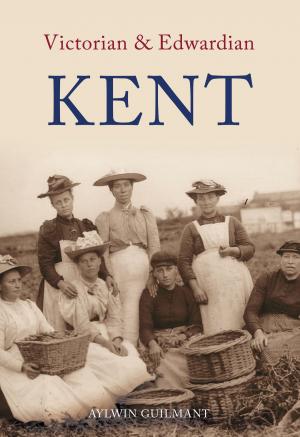| Author: | Gerry van Tonder | ISBN: | 9781445659589 |
| Publisher: | Amberley Publishing | Publication: | September 15, 2016 |
| Imprint: | Amberley Publishing | Language: | English |
| Author: | Gerry van Tonder |
| ISBN: | 9781445659589 |
| Publisher: | Amberley Publishing |
| Publication: | September 15, 2016 |
| Imprint: | Amberley Publishing |
| Language: | English |
Mansfield Through Time offers a cameo glimpse of a town whose character and identity has, over the last few hundred years, been moulded, modified and tempered by coal mining and the Industrial Revolution. This ancient market town evolved into Nottinghamshire’s second largest town, a strategic trading hub from which roads radiate to all cardinal points. With the surrounding area rich in coal deposits and bountiful farmland, corn and textile milling developed alongside a rapidly expanding beer brewing industry. The latter half of the twentieth century, however, witnessed the demise of both the coal mines and breweries. Engineering companies shut down and the mills closed their doors permanently. The town, to a large extent, reverted to its commercial roots, as it strived towards the regeneration of prosperity lost to the influences of multinational economics. Much of Mansfield’s past, previously invested in transient buildings and structures, now only exists as sepia images stored in archives. This book offers a comparative and nostalgic look at how the town has changed through time.
Mansfield Through Time offers a cameo glimpse of a town whose character and identity has, over the last few hundred years, been moulded, modified and tempered by coal mining and the Industrial Revolution. This ancient market town evolved into Nottinghamshire’s second largest town, a strategic trading hub from which roads radiate to all cardinal points. With the surrounding area rich in coal deposits and bountiful farmland, corn and textile milling developed alongside a rapidly expanding beer brewing industry. The latter half of the twentieth century, however, witnessed the demise of both the coal mines and breweries. Engineering companies shut down and the mills closed their doors permanently. The town, to a large extent, reverted to its commercial roots, as it strived towards the regeneration of prosperity lost to the influences of multinational economics. Much of Mansfield’s past, previously invested in transient buildings and structures, now only exists as sepia images stored in archives. This book offers a comparative and nostalgic look at how the town has changed through time.















